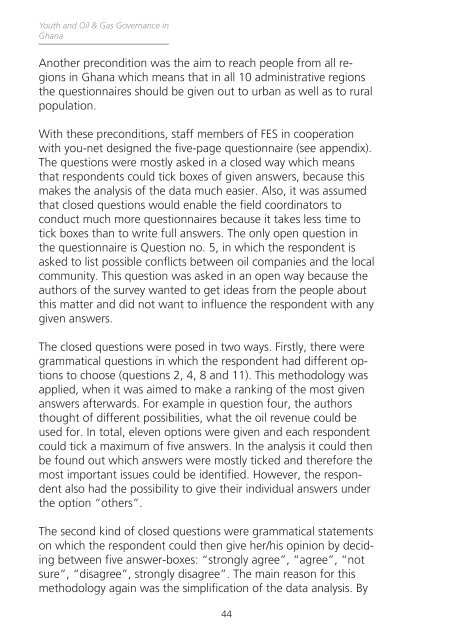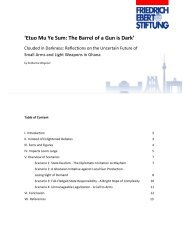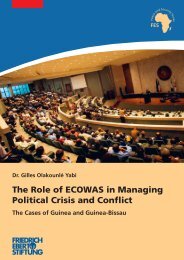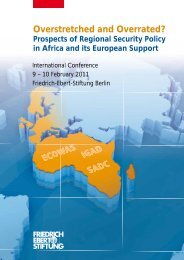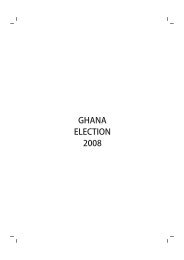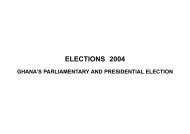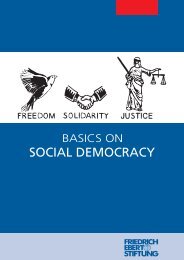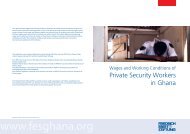Youth and Oil & Gas Governance in Ghana - Friedrich-Ebert-Stiftung ...
Youth and Oil & Gas Governance in Ghana - Friedrich-Ebert-Stiftung ...
Youth and Oil & Gas Governance in Ghana - Friedrich-Ebert-Stiftung ...
You also want an ePaper? Increase the reach of your titles
YUMPU automatically turns print PDFs into web optimized ePapers that Google loves.
<strong>Youth</strong> <strong>and</strong> <strong>Oil</strong> & <strong>Gas</strong> <strong>Governance</strong> <strong>in</strong><strong>Ghana</strong>Another precondition was the aim to reach people from all regions<strong>in</strong> <strong>Ghana</strong> which means that <strong>in</strong> all 10 adm<strong>in</strong>istrative regionsthe questionnaires should be given out to urban as well as to ruralpopulation.With these preconditions, staff members of FES <strong>in</strong> cooperationwith you-net designed the five-page questionnaire (see appendix).The questions were mostly asked <strong>in</strong> a closed way which meansthat respondents could tick boxes of given answers, because thismakes the analysis of the data much easier. Also, it was assumedthat closed questions would enable the field coord<strong>in</strong>ators toconduct much more questionnaires because it takes less time totick boxes than to write full answers. The only open question <strong>in</strong>the questionnaire is Question no. 5, <strong>in</strong> which the respondent isasked to list possible conflicts between oil companies <strong>and</strong> the localcommunity. This question was asked <strong>in</strong> an open way because theauthors of the survey wanted to get ideas from the people aboutthis matter <strong>and</strong> did not want to <strong>in</strong>fluence the respondent with anygiven answers.The closed questions were posed <strong>in</strong> two ways. Firstly, there weregrammatical questions <strong>in</strong> which the respondent had different optionsto choose (questions 2, 4, 8 <strong>and</strong> 11). This methodology wasapplied, when it was aimed to make a rank<strong>in</strong>g of the most givenanswers afterwards. For example <strong>in</strong> question four, the authorsthought of different possibilities, what the oil revenue could beused for. In total, eleven options were given <strong>and</strong> each respondentcould tick a maximum of five answers. In the analysis it could thenbe found out which answers were mostly ticked <strong>and</strong> therefore themost important issues could be identified. However, the respondentalso had the possibility to give their <strong>in</strong>dividual answers underthe option “others”.The second k<strong>in</strong>d of closed questions were grammatical statementson which the respondent could then give her/his op<strong>in</strong>ion by decid<strong>in</strong>gbetween five answer-boxes: “strongly agree”, “agree”, “notsure”, “disagree”, strongly disagree”. The ma<strong>in</strong> reason for thismethodology aga<strong>in</strong> was the simplification of the data analysis. By44


